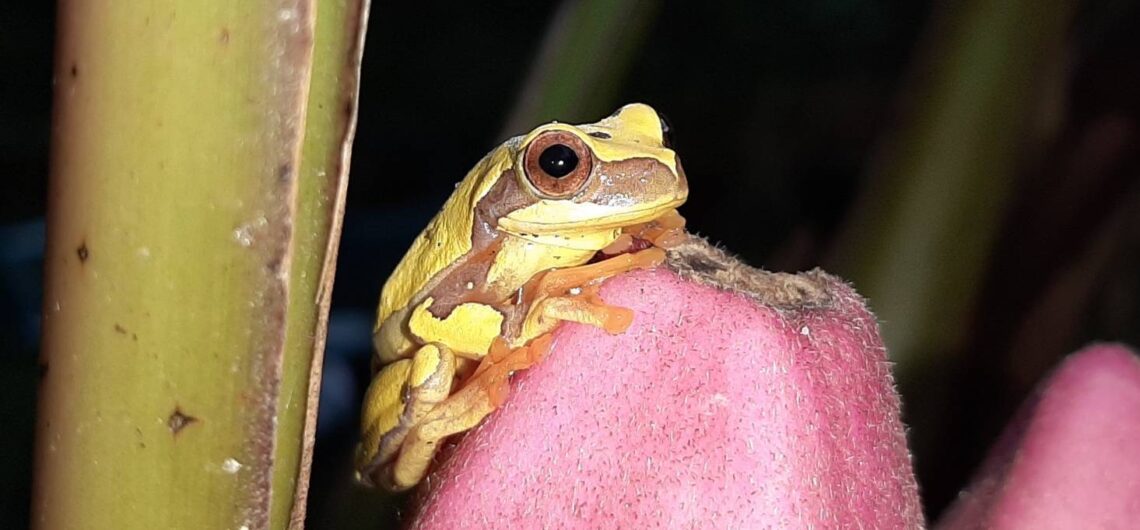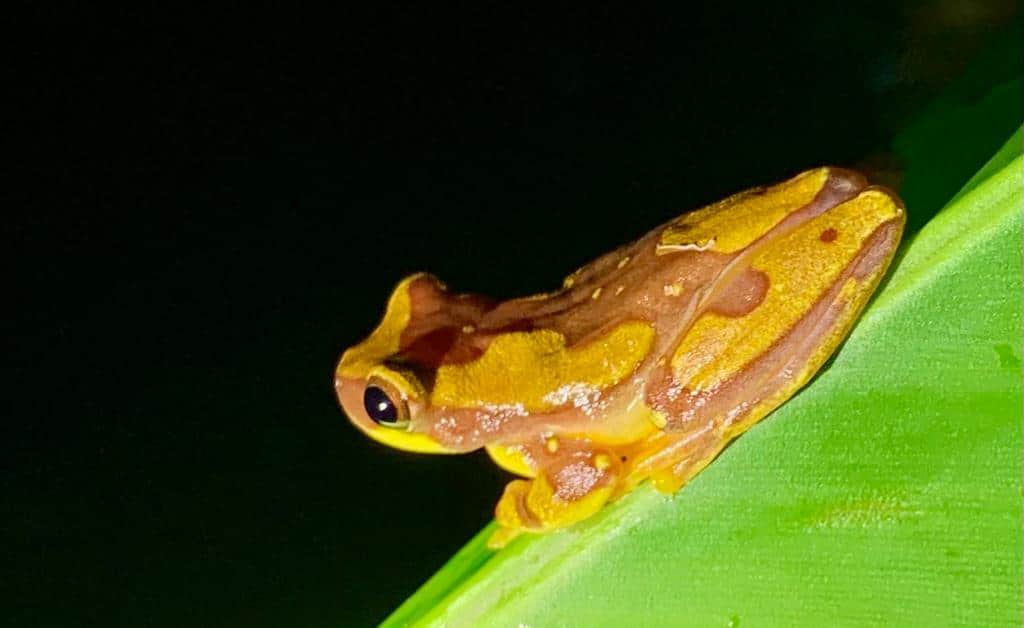Hourglass Tree Frog
Dendropsophus ebraccatus
Photo by Eliecer Rodríguez.
The Hourglass Tree Frog is a common and adaptable species of frog that has been the subject of much scientific attention due to several unusual features of its biology. So named for the brown, roughly hourglass-shaped patch on its back, it is also known as the “pantless” tree frog presumably for its bright yellow thighs. Overall this frog is variably yellow in coloration, growing brighter by night. Hourglass Tree Frogs occur locally from southern Mexico south into northwestern Colombia; although they favor the interior of humid tropical forest, up to 1600m in elevation, they can also survive in forest edge and other disturbed or open habitats. The photos featured here were taken on the grounds of the Canopy Lodge, El Valle de Antón.
Research interest in the Hourglass Tree Frog has focused mainly on its breeding biology. Hourglass Tree Frogs typically breed during the rainy season (mostly May–November, in Panama). Males congregate into leks or “breeding choruses” at the edges of ponds, calling competitively at certain frequencies and pulse rates to attract females. Eggs are laid in multiple large clutches and hatch after approximately 3½ days; tadpoles develop in ponds and begin to metamorphose after about 6 weeks.
Recent studies conducted near Gamboa, Panama have shown that Hourglass Tree Frogs display a unique sort of reproductive plasticity, meaning an ability to vary their reproductive strategies in response to local conditions. Whereas most if not all other vertebrates have evolved to reproduce exclusively on land or exclusively in the water, Hourglass Tree Frogs lay their eggs either terrestrially (on vegetation overhanging water) or aquatically (directly on the surface of or submerged in water), depending on shade conditions. As each option brings its own variable risks—including desiccation in the air, oxygen constraints in the water, and predation—this reproductive plasticity allows the frogs to adapt to highly local conditions. This plasticity possibly represents an intermediate stage in the evolution of terrestrial reproduction from aquatic reproduction. Furthermore, this distinctive trait may help the Hourglass Tree Frog cope with increasing ecological challenges posed by habitat disturbance and climate change.
Photo by Raúl Arias de Para.
References:
Halliday, T. (2016). The Book of Frogs: A Life-Size Guide to Six Hundred Species from Around the World. Chicago University Press, Chicago, IL.
IUCN SSC Amphibian Specialist Group. (2020). Dendropsophus ebraccatus. The IUCN Red List of Threatened Species 2020: e.T55470A53954856. https://dx.doi.org/10.2305/IUCN.UK.2020-1.RLTS.T55470A53954856.en.
Smithsonian Tropical Research Institute. Dendropsophus ebraccatus. Accessed July 1, 2021. https://stricollections.org/portal/taxa/index.php?tid=10905&taxauthid=1&clid=0
Touchon, J. C., and K. M. Warkentin (2008). Reproductive mode plasticity: aquatic and terrestrial oviposition in a treefrog. Proceedings of the National Academy of Sciences of the United States of America, 105(21), 7495–7499. https://doi.org/10.1073/pnas.0711579105.


